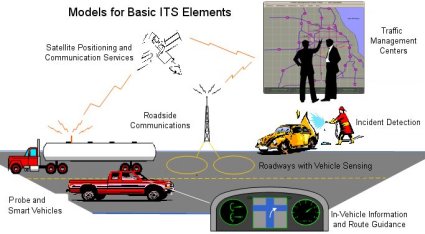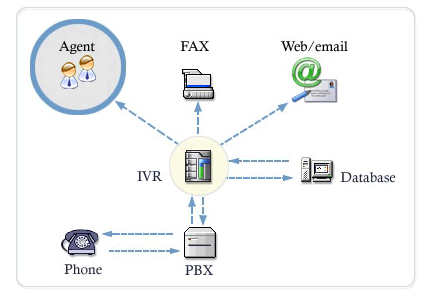Infrared: Infrared is an energy radiation having a frequency invisible to our eyes. Infrared is widely used in communication and control devices. Integrated Circuits: Integrated Circuits (ICs) are also known as chips. ICs are etched onto tiny semiconductor (silicon) chips. Complex integrated circuits are used in most of today’s electronic gadgets and equipment.
Intelligent Home: Intelligent Homes are the new age wired-homes allowing to have a control of all the aspects of home environment. These include lighting, security, telecom, appliances, climate, music et al from any locations. A single point remote or keypad controls every aspect of the home.
Intelligent Transportation Systems: In simple terms, Intelligent Transport Systems (ITS) refers to use of computers and different forms of communications technologies to solve the problems of transportation. Intelligent Transport Systems (ITS) facilitates collection of relevant data and intelligence for a proper implementation of a plan for smooth flow of traffic and other transport management issues.
Intelligent Sensors: Intelligent sensors are smart devices having Signal Processing functions which are shared by distributed machine intelligence. Robots which have the ability to perceive and reason are good example of Intelligent Sensors. Intelligent Sensors are now widely used in industrial setups in harsh environments detrimental to human safety.
Intranet and the Internet
Intranet and the website accessible on the open Internet are essentially two distinct information spaces. There are a number of differences between the two along various dimensions. It is always a good idea to have a separate user interface design to maintain such distinction. This is important because the users should readily know when they are on the internal net (Intranet) and the moment they access the World Wide Web. Further, a different design will also aid in better navigating, sense of place and a clear understanding of information management (information which is internal, secure and confidential vis-à-vis information which is freely shared).
Some of the major differences between an Intranet and the Internet are highlighted here:
- Nature of Users: Access to Intranet is mostly open to employees of organisations having a fair idea about the company, its operations, organizational structure, terminologies and circumstances. Access is password protected and accessible only to employees or authorized users. Whereas an Internet site is more of a public face of an organisation accessed by customers with limited knowledge about it and not very keen to know about its day to day functioning.
- Nature of Tasks: Intranet applies for facilitating the day to day work within an organisation, this may include complex applications whereas an Internet site maintained by an organisation is for the world to know what it does, product details et al.
- Type and Quantum of Information: The Intranet verily by its nature will assimilate a variety of detailed information- draft reports, project status reports, HR information, internal progress and other information, whereas the Internet site primarily delves into more of marketing information as well as customer support information. The amount of information generated also differs. Typically, Intranet contains much more number of pages as compared to an organisation’s website. This can go even upto 100 times. This is chiefly because works by many departments are well documented on the Intranet even though they never publish anything publicly (on the internet).
- Navigational System: An Intranet is generally supported by a stronger navigational system as compared to an Internet site. This is because Intranet encompasses a larger volume of information. A navigation system in an Intranet also facilitates movement between Servers whereas an internet public website is required to support within-site navigation.
- Design: An Intranet design typically is focussed more on task-orientation and less flashy. There is generally a single Intranet design. An Intranet can be enriched with a large number of options and features without intimidating or overwhelming the users, which can be the case on the open Internet with rapid surfing between sites.
- Bandwidth Specifications: Intranets may be accessible from the Internet but their speed is often much faster than Websites typically stuck at low-band or mid-band, server breakdowns and other problems. So it is not uncommon to see applications such as multimedia, rich graphics and other advanced high-bandwidth content, such as audio and video on Intranet pages.
Internet Protocol: Internet Protocol refers to the set of techniques for transmission of data over the Internet. Devices connected to a network, internet or even a local area network (LAN) is assigned an Internet Protocol number. This address helps in unique identification of the device among all other devices which are connected to the extended network.
Interactive Voice Response: An Interactive Voice Response (IVR) System allows callers to create complex voice response system over the telephone. IVR is very useful in providing 24x7 automated customer service and reducing clerical processing.
IPV6: Internet Protocol Version 6 or IPv6 in short is the next generation Internet Protocol for taking the place of the current IP version, IPV4( Internet Protocol, Version 4). IPV6 boasts of a lot of improvement over IPV4 in terms of routing, number of available addresses and network autoconfiguration.
In Silico Analysis: In Silico Analysis refers to performing an analysis using computers in tandem with informatics capabilities.




